Sustainable Floral Design Techniques w/ Joseph Massie
We’re honored to welcome our friend Joseph Massie to the BB Blog today as he shares a design tutorial + some exciting news from his studio! Joe is passionate about passing on his floral design expertise to designers of all skill levels, so let’s get busy learning from a 5-time RHS Chelsea Flower Show Gold Medalist!
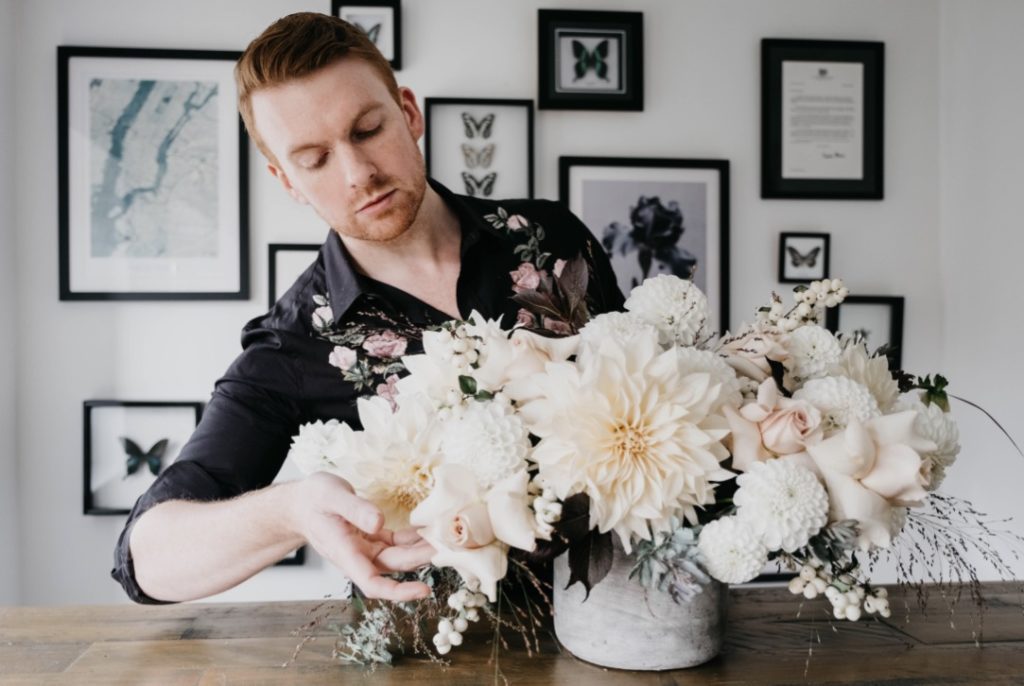
Spring is slowly but surely creeping into my garden here in England, and although at the time of writing we still have a little snow on the ground, I can just make out the delicate clusters of Snowdrops (Galanthus) peeking out from the frost. You know as well as I do that with Spring, comes renewal and some brand new things too – which is fitting, as today I’m delighted to be announcing the opening of Flower Class : our brand new community membership, designed exclusively for flower lovers, and to celebrate, I’m sharing a snippet of my latest e-books – featuring a useful selection of sustainable floral design techniques!
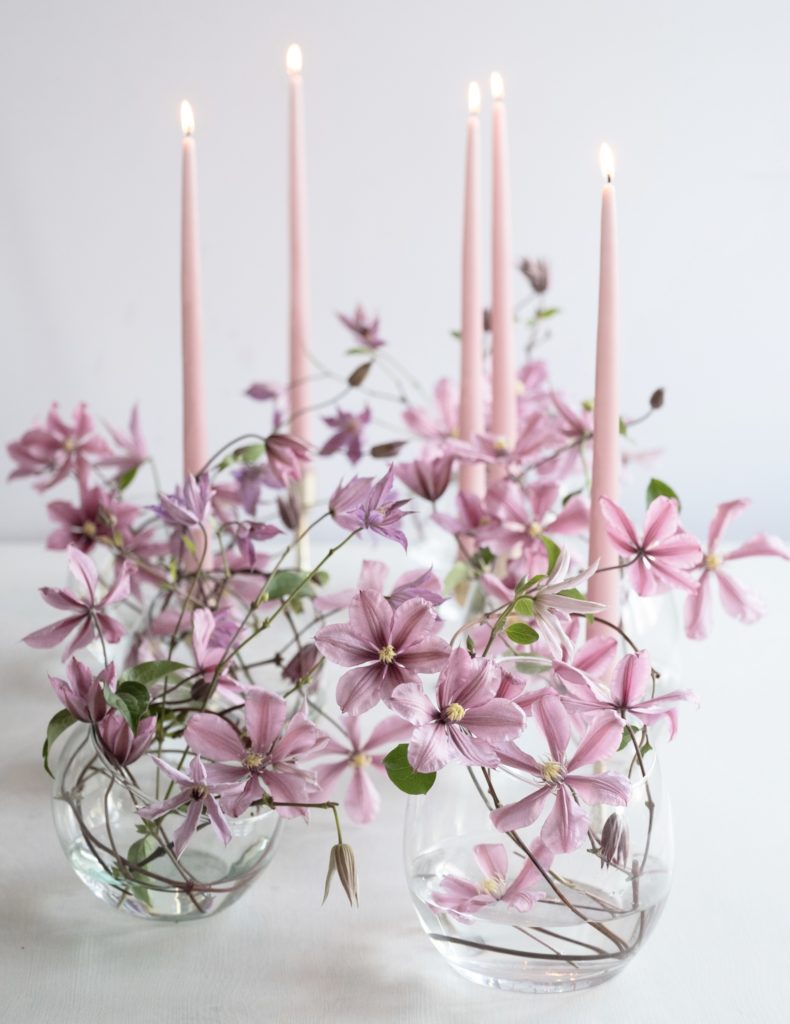
Last summer, back when we launched our very first online courses, we knew within the first few weeks that we’d found a new way to connect with our people – something far beyond the hands-on classes we’re privileged to run in our School in England – a global tribe of flower lovers who care not just about the ‘how’ to make a design, but about the ‘why’ of a design, too. Over the following months we really started to find out what makes designers in our tribe different, and whilst we could see that our courses were really well received, I also felt that we could give more to our community – to give more support on a regular basis, share tutorials, and spread our expertise as our floral designers to not only grow their skills, but also grow their businesses too. I could see from the messages and comments we received that there was a thirst for progressive knowledge, for ongoing learning, that our stand alone courses and course collections were just not providing – hence Flower Class was born!
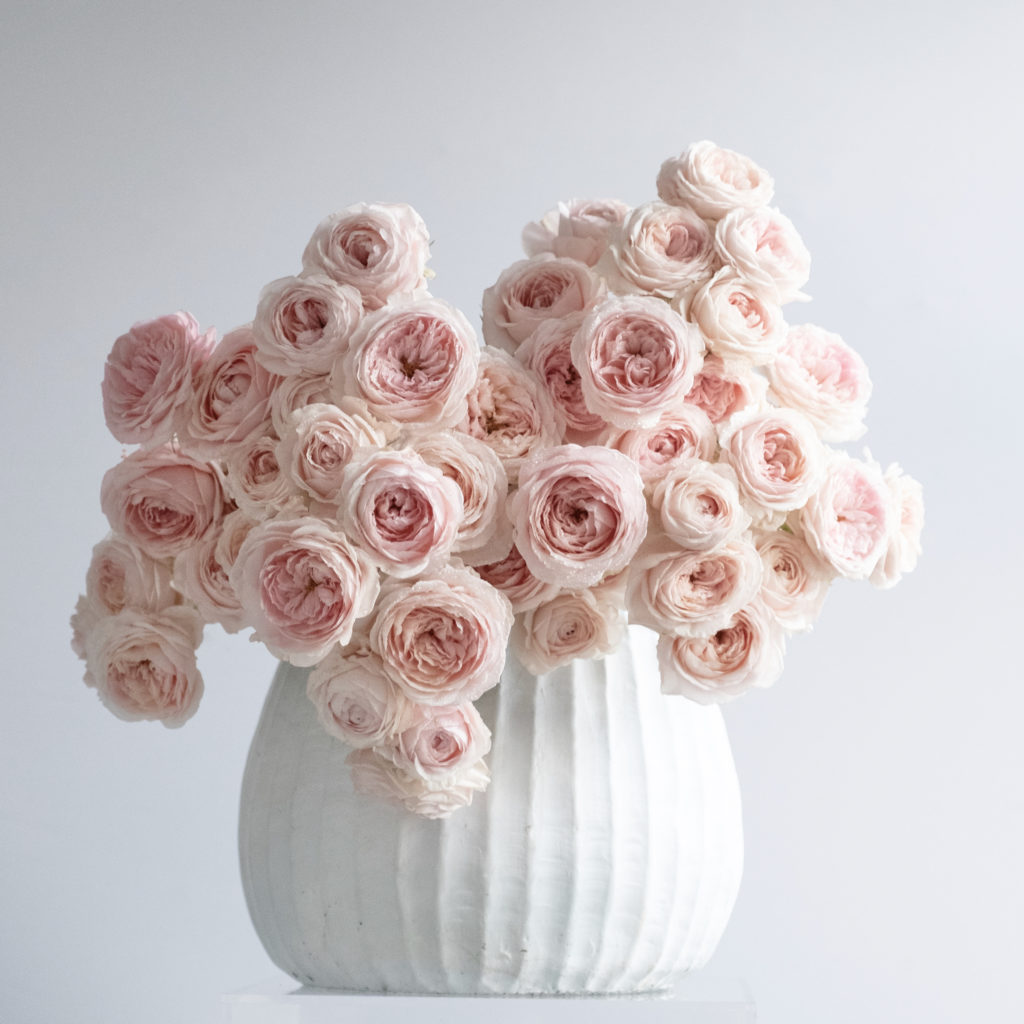
It’s an exciting day today in JMHQ, as our Flower Class membership opens it’s doors, as it is firmly my intention that Flower Class becomes something that is much more yours than it is mine; as each and every month you’ll find brand new tutorials designed just for you – aimed to inspire, educate and empower you to take the steps to develop your practice and your business.
To celebrate our launch, today I’m delighted to be sharing an excerpt from my latest e-books – the Sustainable Floral Design Techniques Collection, which are also available today. If you’ve been looking to explore sustainable techniques further – it’s very much my hope you’ll find these tutorials useful. Let’s dive in!
The FOAM FREE ELEVATED CENTREPIECE
Elevated centrepieces provided me with a significant challenge when I was first exploring my newly sustainable practice. Essentially, I needed a big water source atop a stand or vase – which was relatively easy to create – but I continually stumbled as how to add in materials that would drape beautifully, and hide some of the mechanics when displayed upon a table. After some trial and error, I developed the below technique, which essentially uses two re-usable plastic items to create mechanics which provided me with the angles I required. In the following pages I explore the very best foam free solution for this style of design, which I use today within my own company.
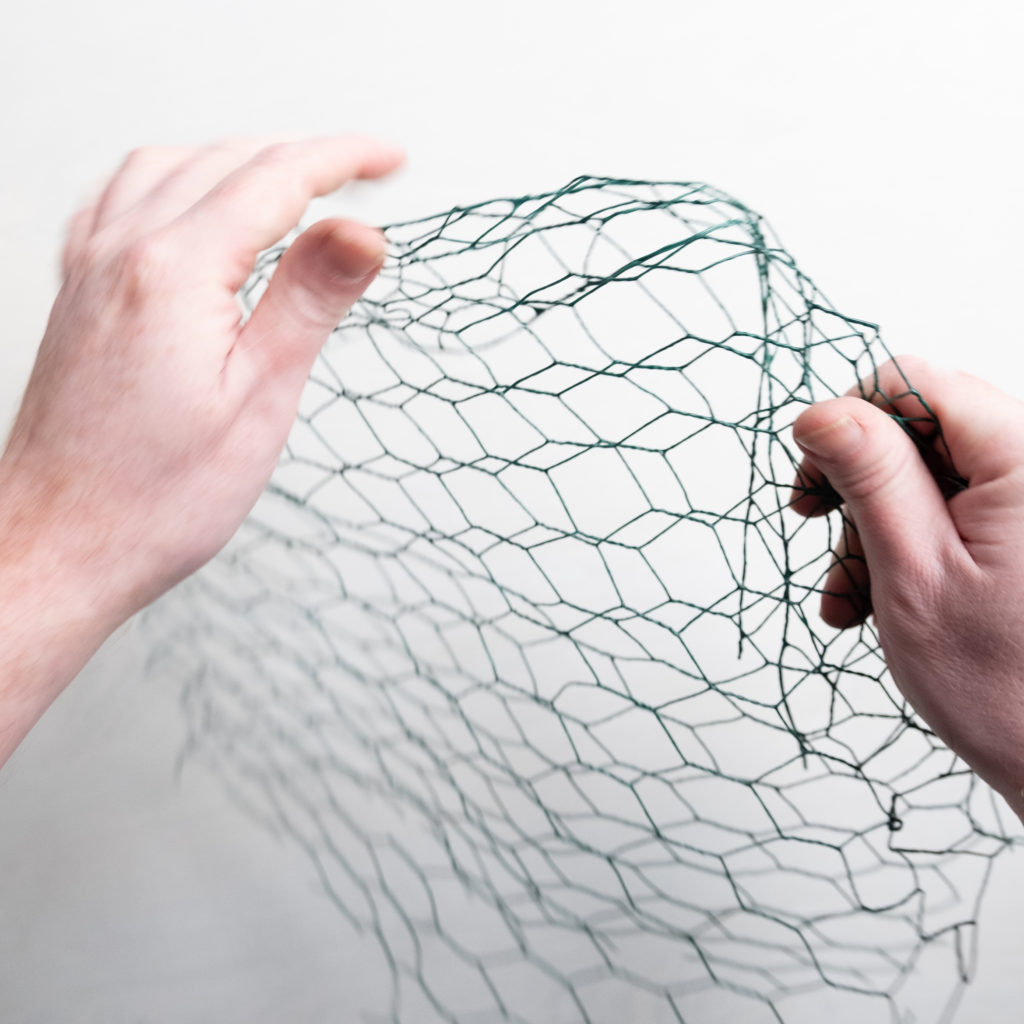
1. To begin, select a re-useable plastic bowl (often called an O-bowl) which is large enough to hold the amount of stems for a large arrangement, and also deep enough to have a significant water supply for your materials. Take a sheet of plastic coated chicken wire, and trim to a size approximately twice the size of the diameter of your bowl. Fold your chicken wire in half, creating a double layer which we’ll be working with in this project. Begin by folding the corners of your chicken wire, and gently start to fold the chicken wire up into itself to form a small nest, creating multiple layers of wire within the nest shape.
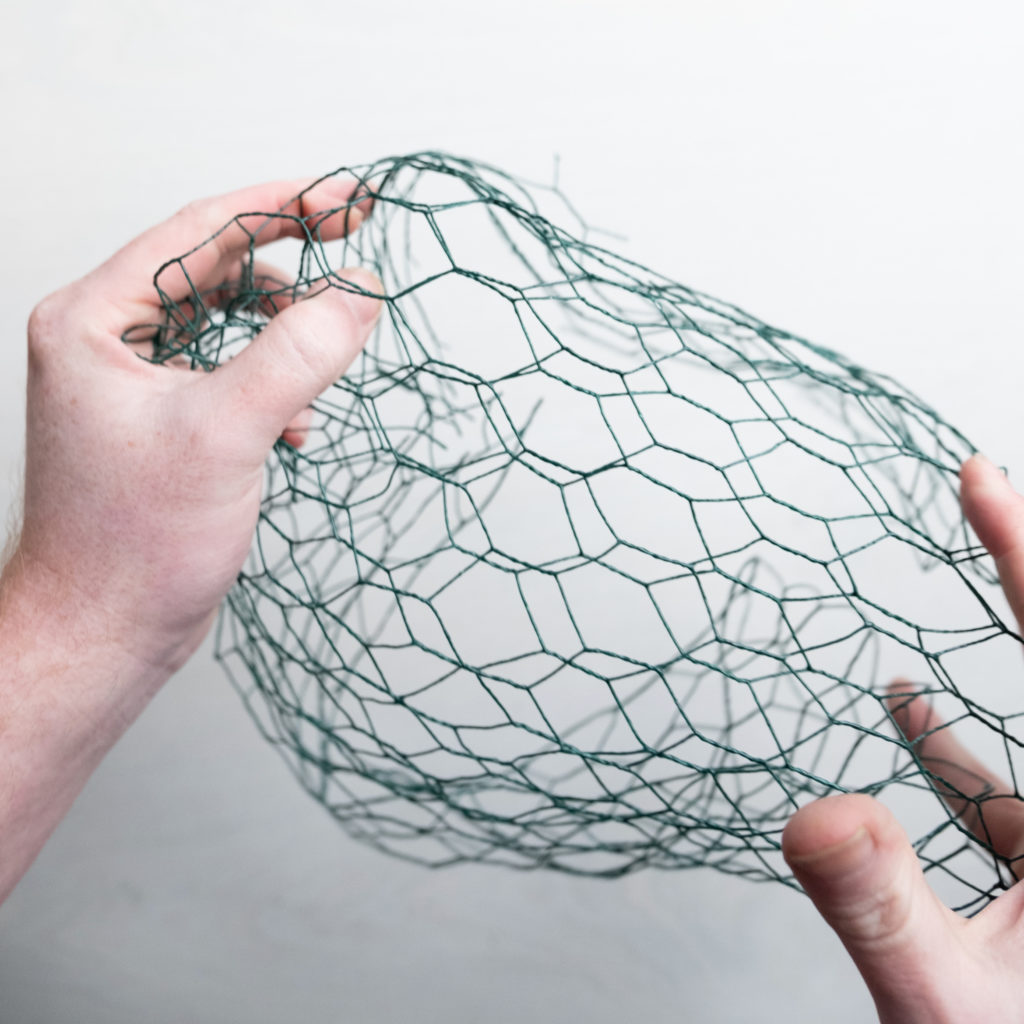
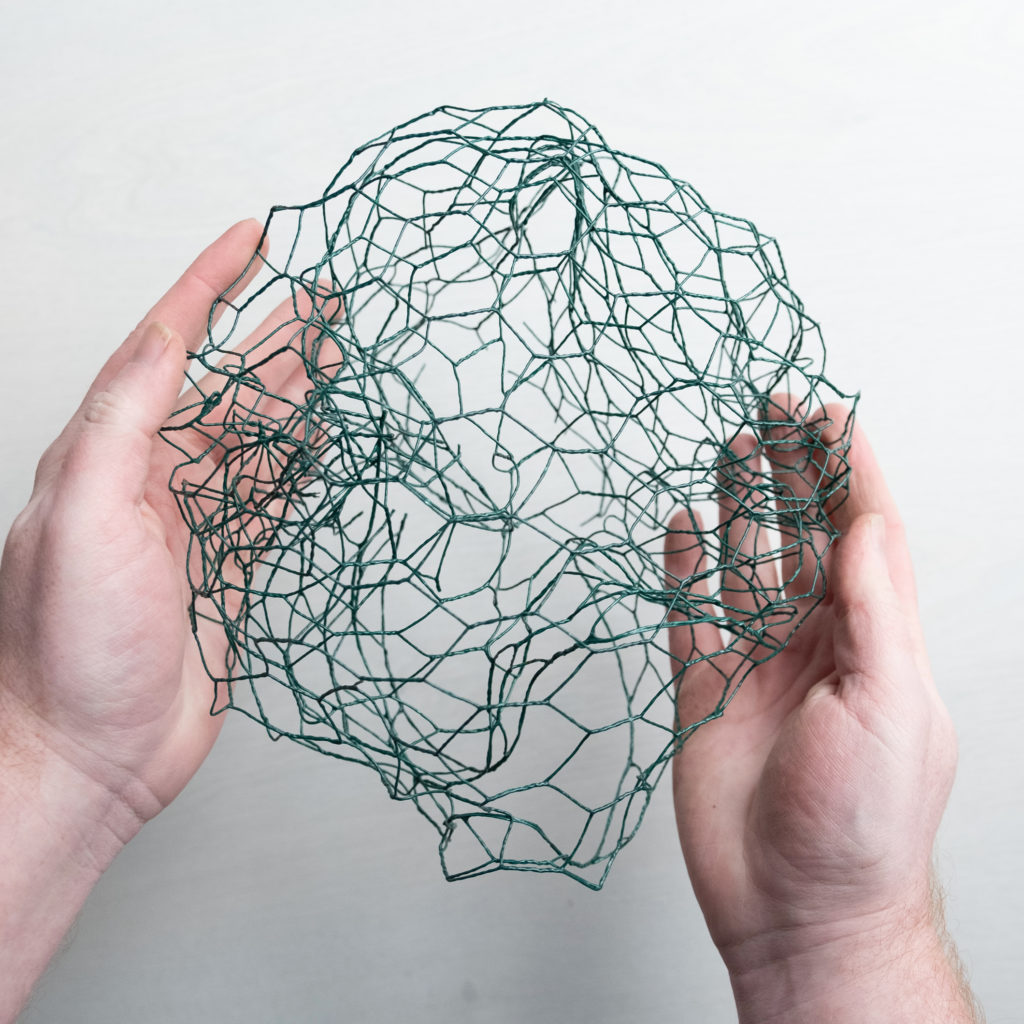
2. Continue to fold the chicken wire into a small, rounded form that will fit neatly within your bowl. Ensure there are multiple layers of chicken wire folded into your form, as it is these multiple layers that will catch all stems and hold them in place.
 3. Place the chicken wire within your bowl, and pat into position securely. The resulting chicken wire nest should fit snugly within the bowl providing an evenly distributed chicken wire framework within.
3. Place the chicken wire within your bowl, and pat into position securely. The resulting chicken wire nest should fit snugly within the bowl providing an evenly distributed chicken wire framework within.
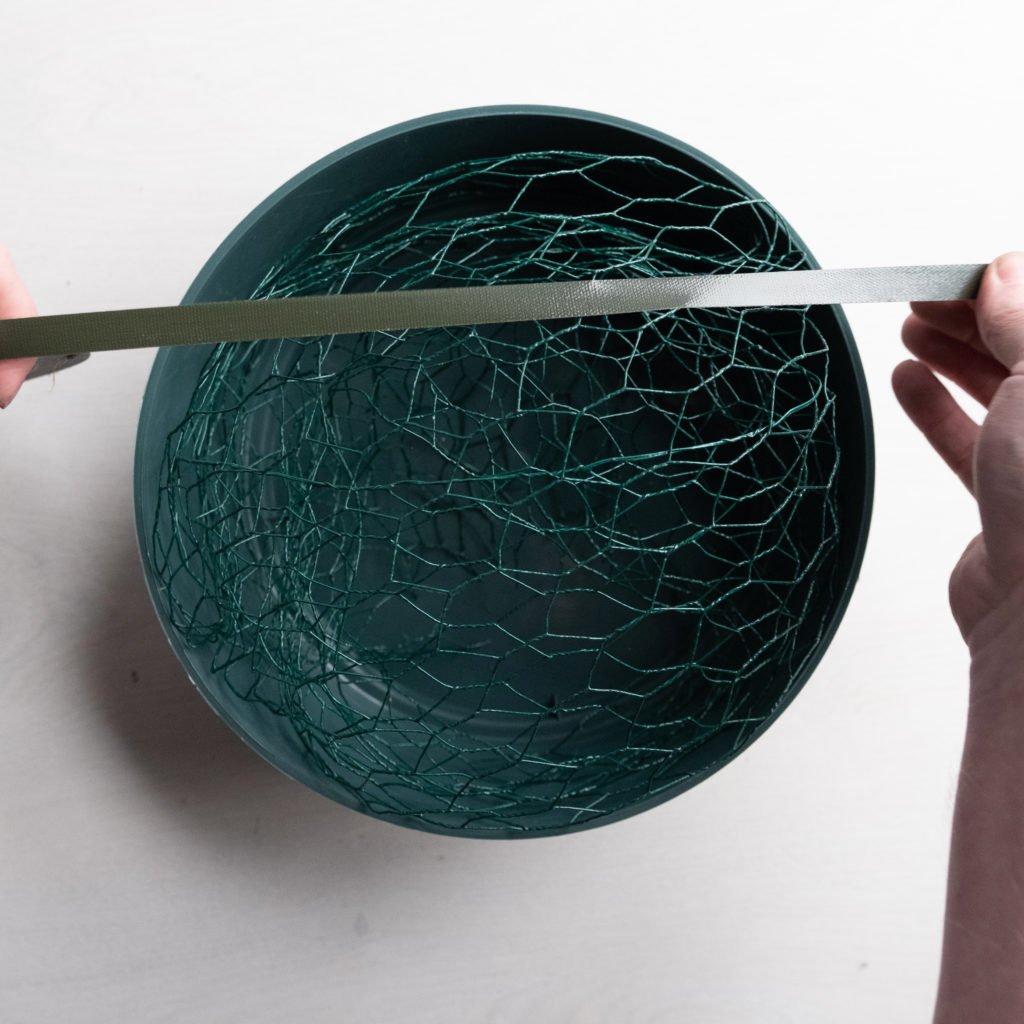
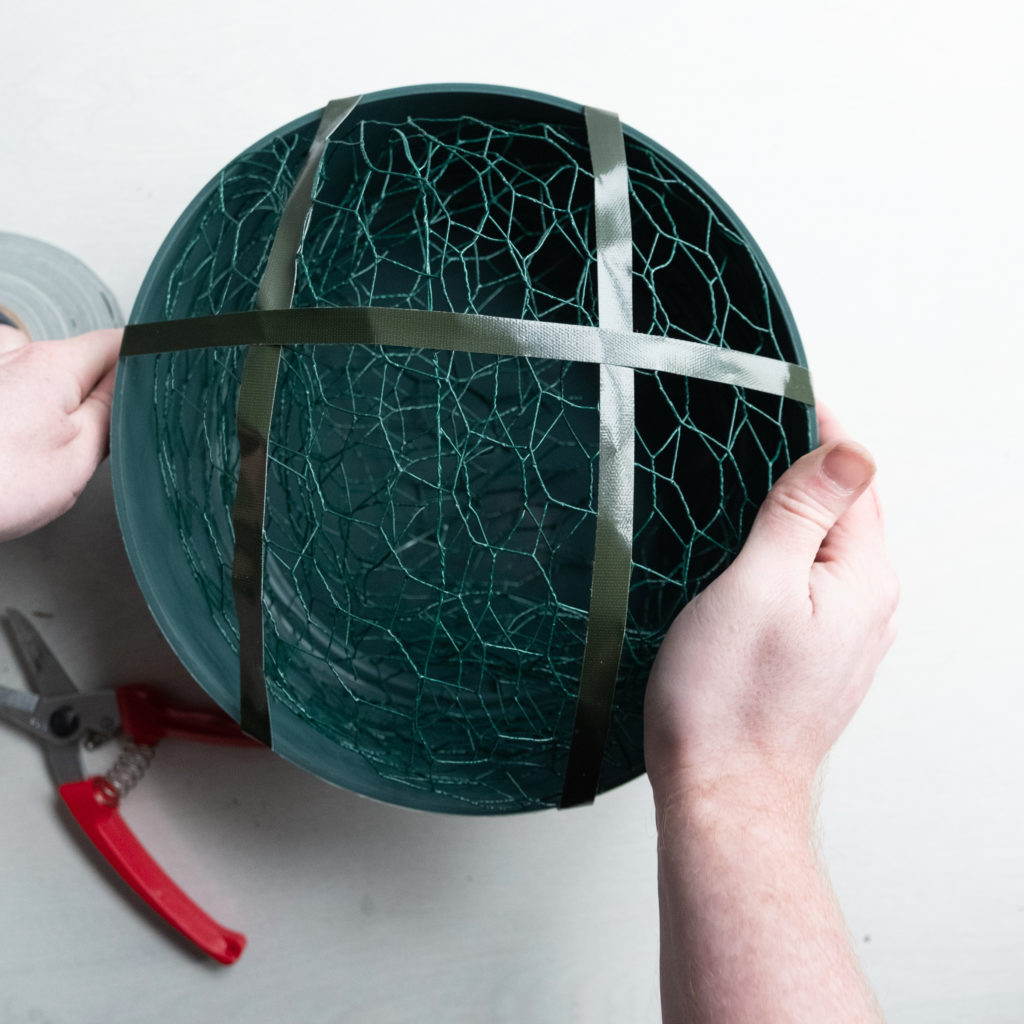
4. Take a piece of pot tape (anchor tape) and place it across the chicken wire within the bowl. Secure the tape onto the side of the container on both sides by running the tape a centimetre or two onto the sides of your bowl. Repeat a further three times as to ensure the tape is entirely secured within.
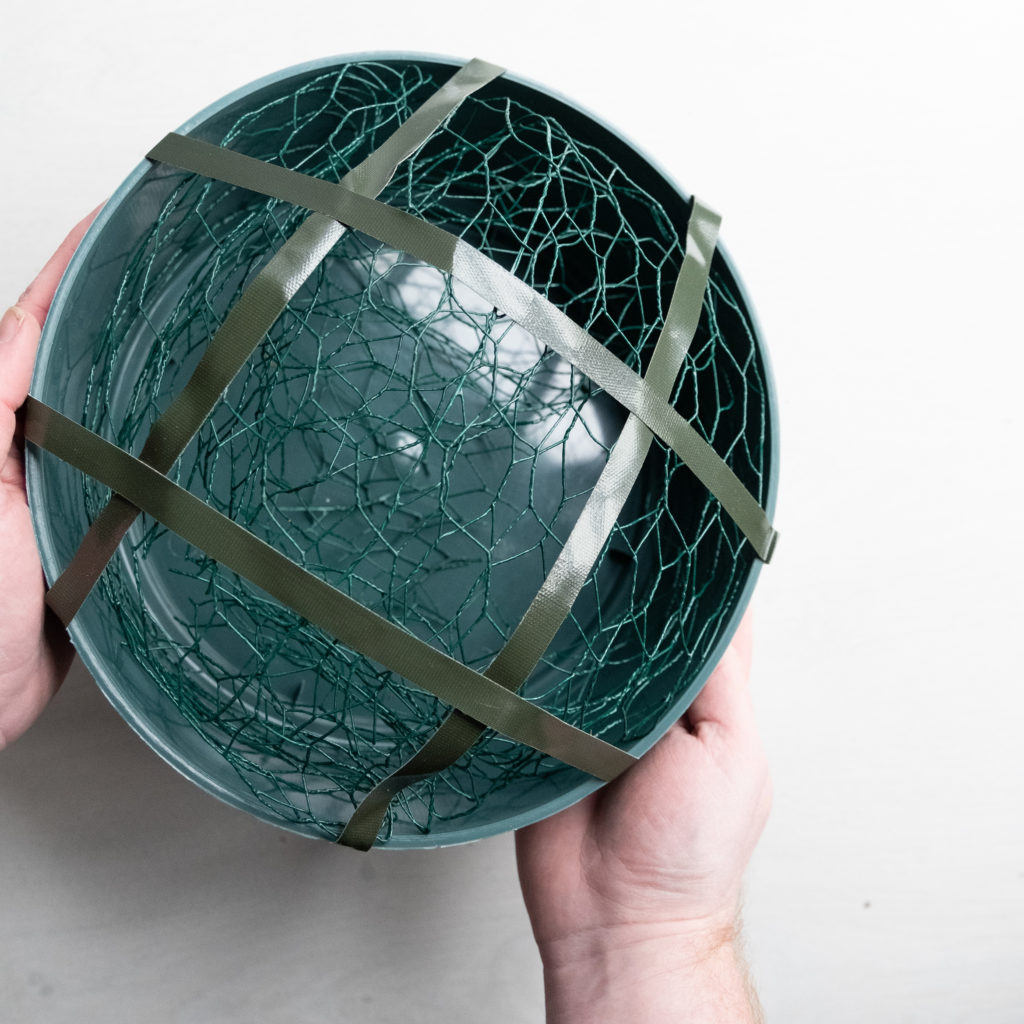
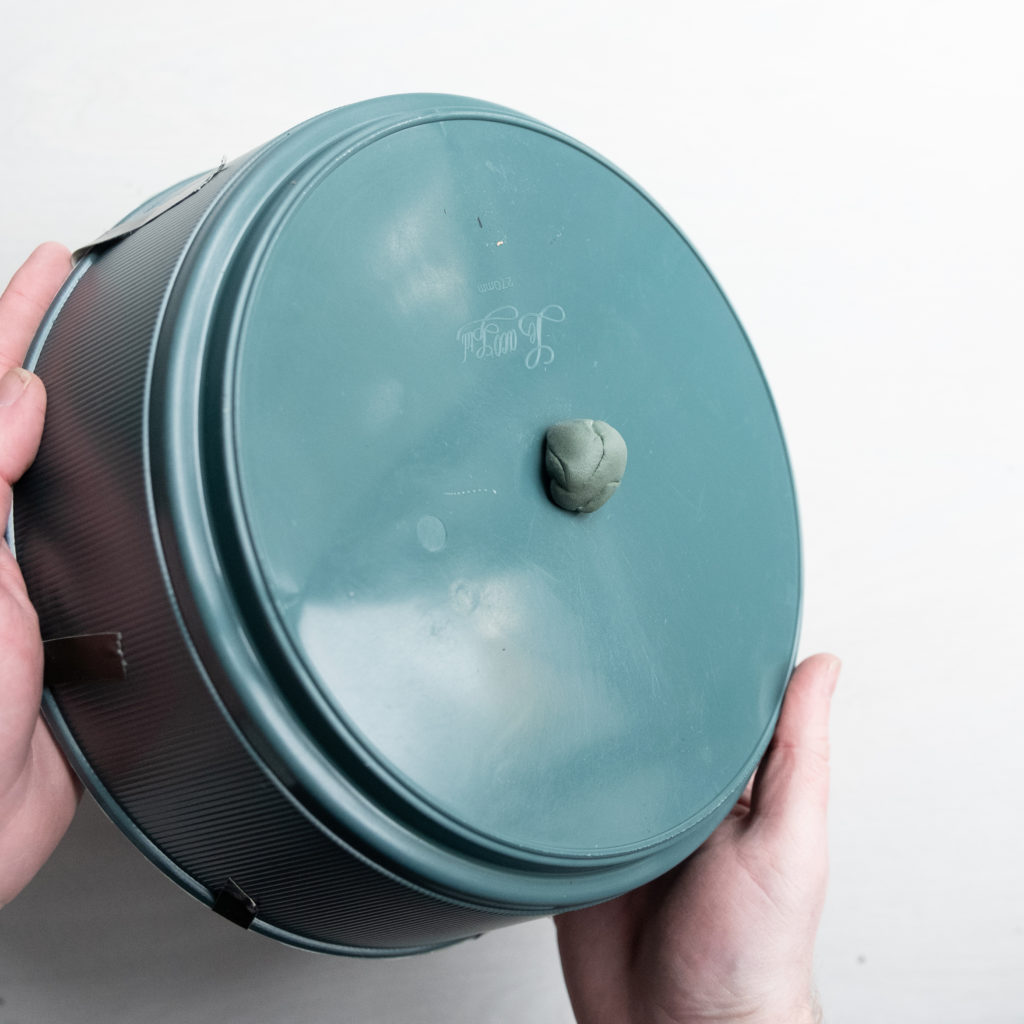
5. Next take a small amount of fix. Warm it in your palms, and roll into a small ball. Apply pressure to secure the fix to the base of your bowl.
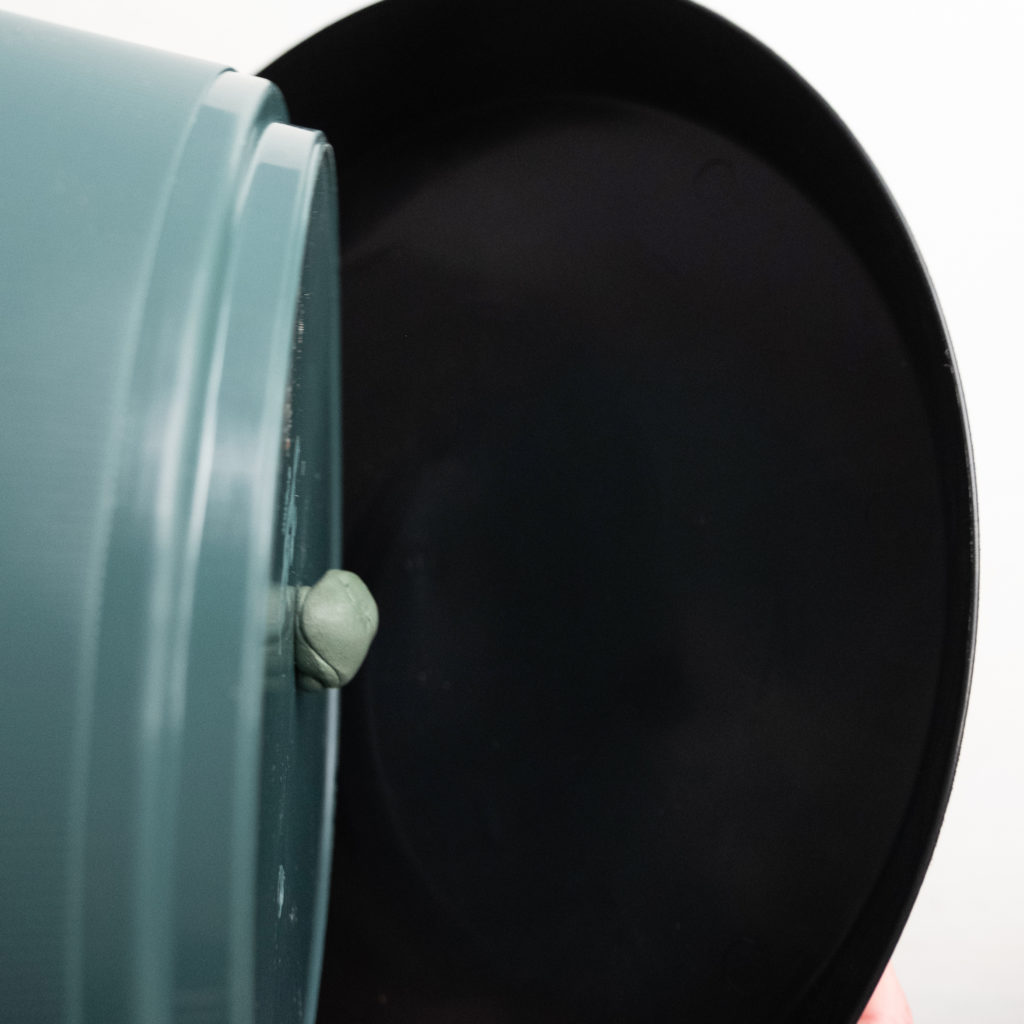
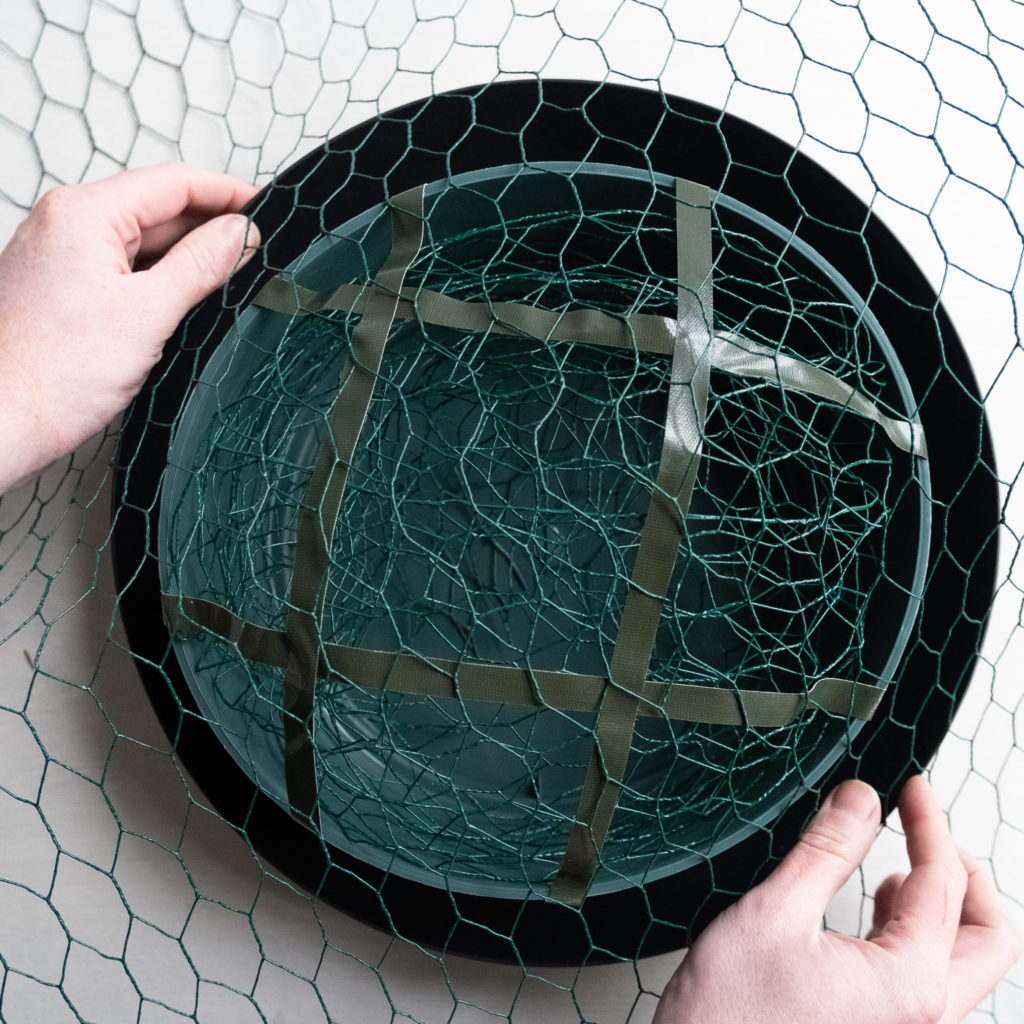
6. Press the O-bowl directly into the centre of a large plastic saucer (the kind often called “drip trays” which are positioned underneath recently watered plants), and apply pressure until secure. Next take a large sheet of plastic coated chicken wire, and lay this directly over the top of the O-bowl and saucer. Sculpt the chicken wire around both vessels, holding them both tightly in position, securing the two dishes to each other.
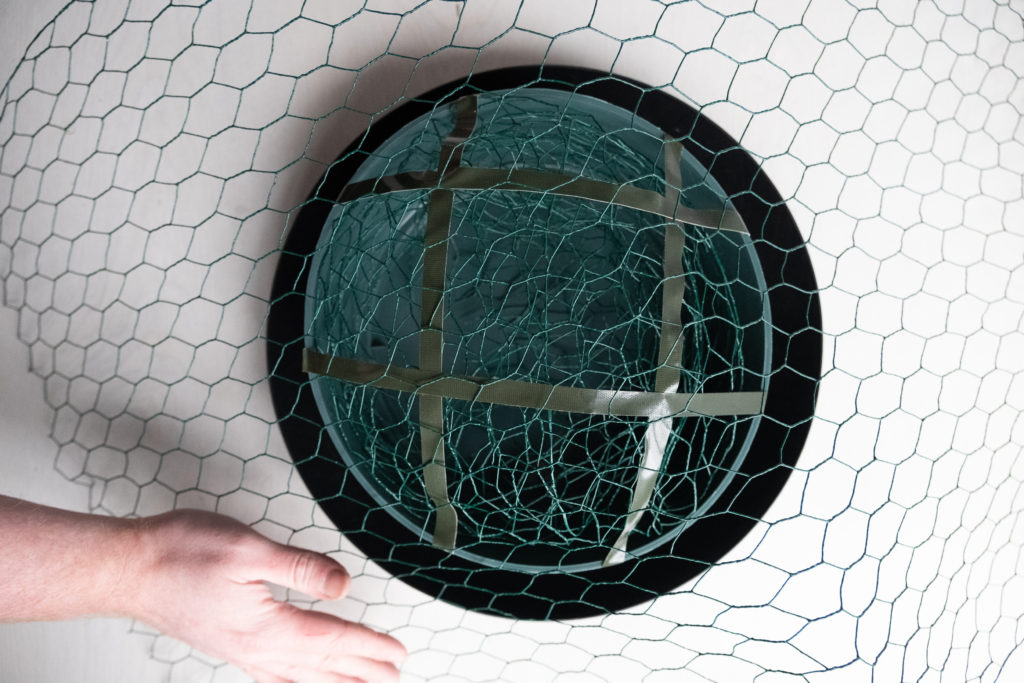
7. Wrap the chicken wire around the bowl and saucer combo, creating one secure mechanic. It is imperative that these two containers are solidly adhered as one container. Carefully knit the chicken wire together underneath the saucer, using hook and loop straps for additional security if needed.
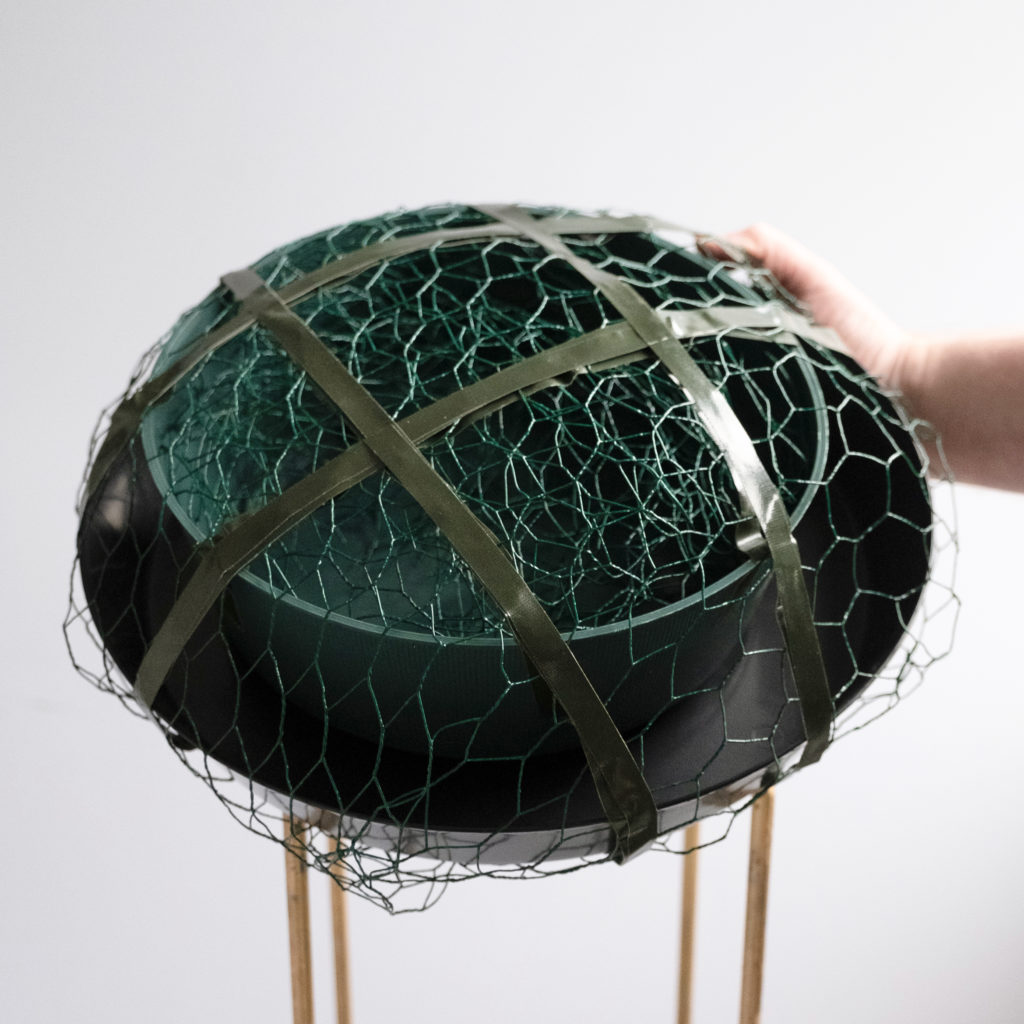
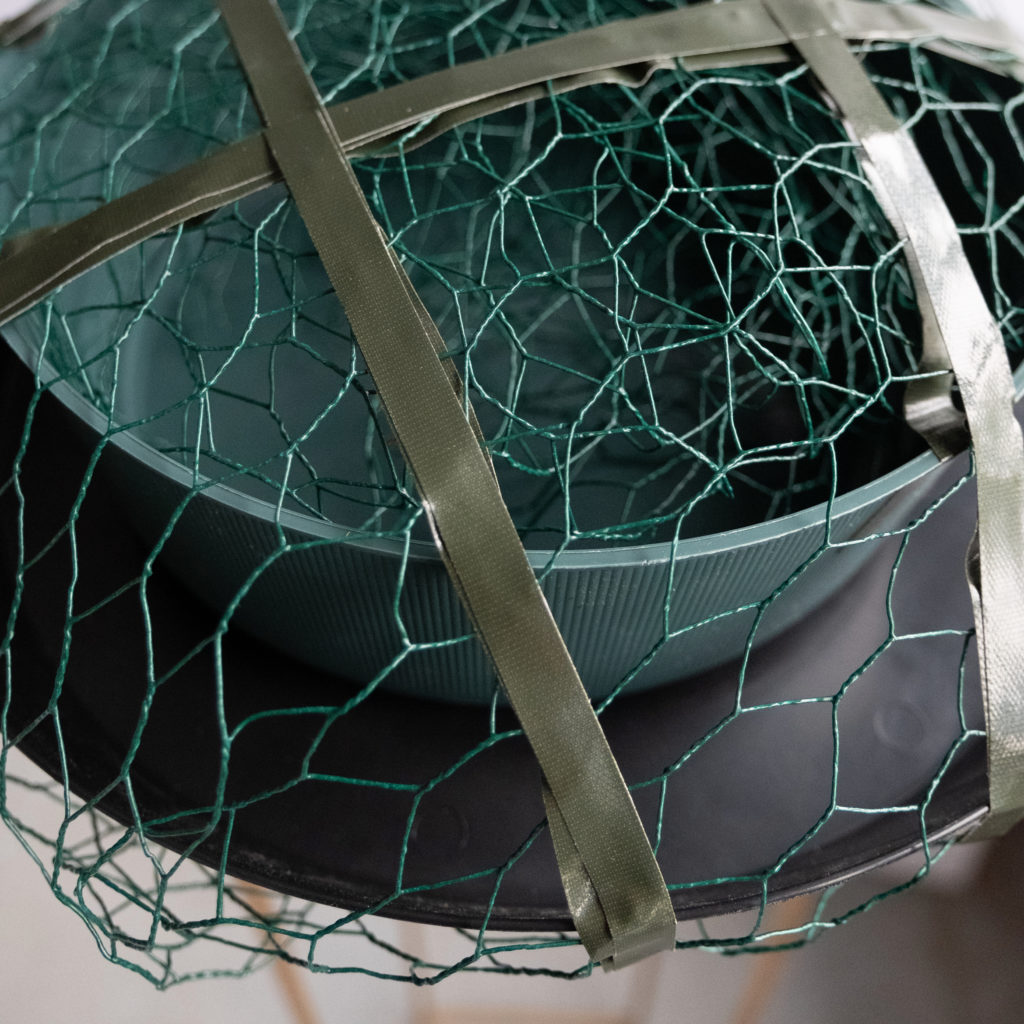
8. For additional security, add another layer of pot tape atop the new layer of chicken wire, ideally placing the tape directly over the initial layers of tape. Keeping the tape along the same lines reduces the amount of tape taking up valuable space into which we could insert our stems.
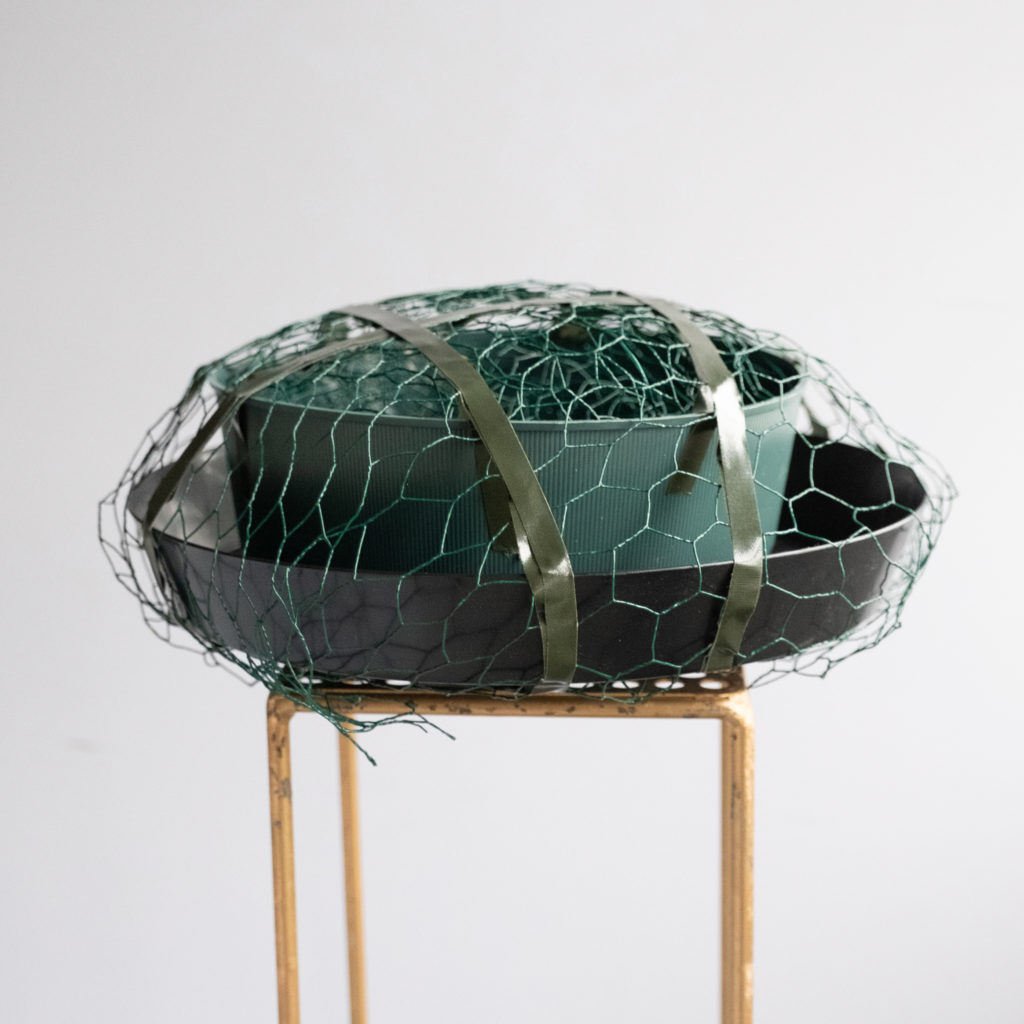
9. We have now created a double layer mechanic for us to design into. The majority of our stems will be placed directly into the O-bowl, ensuring the stems have an adequate water source for the duration of the event. Within the saucer however we can place hardier flowers, hardy foliages, and cascading foliages which will drape down over the edge of the bowl, providing us the opportunity to create a gently cascading form. Hardier foliages that I recommend for this purpose include Ivy, Asparagus fern and Ruscus. For additional security the above mechanic can be taped into position onto a stand, or sat within a vase as required.
The WINDOW BOX
Window boxes are a worthy addition to any sustainably minded floral designer’s arsenal, as they can provide the solution to a number of tricky places where florals might otherwise be hard to incorporate. I typically employ window boxes for aisle meadows, stairways, at the base of archways, at the base of altars and pulpits, to dress fireplaces and mantles and also to dress window ledges (unsurprisingly).
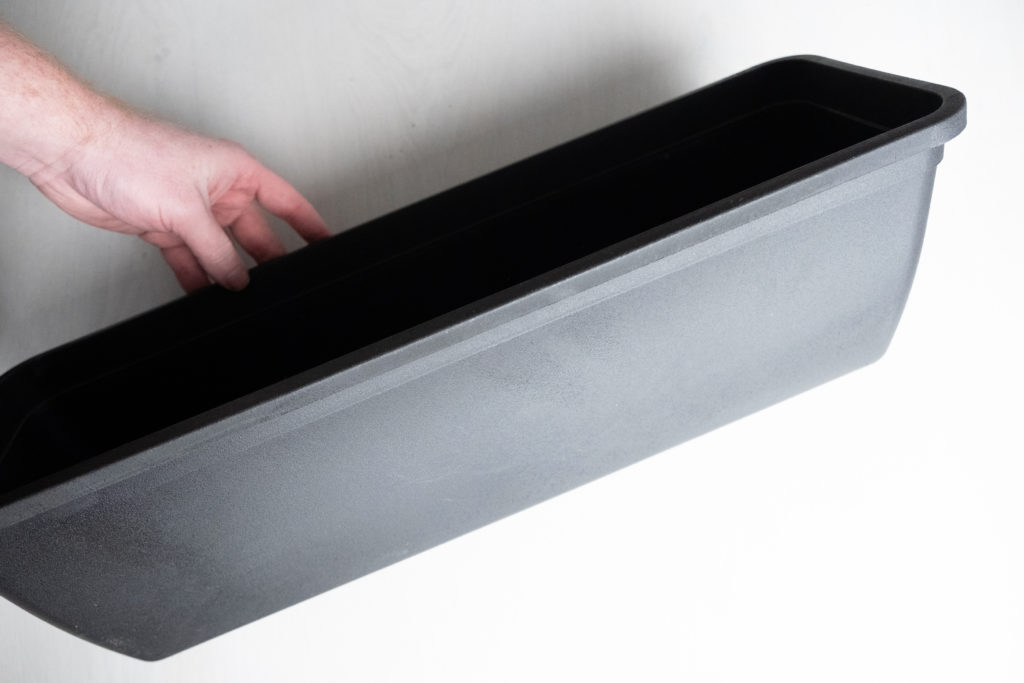
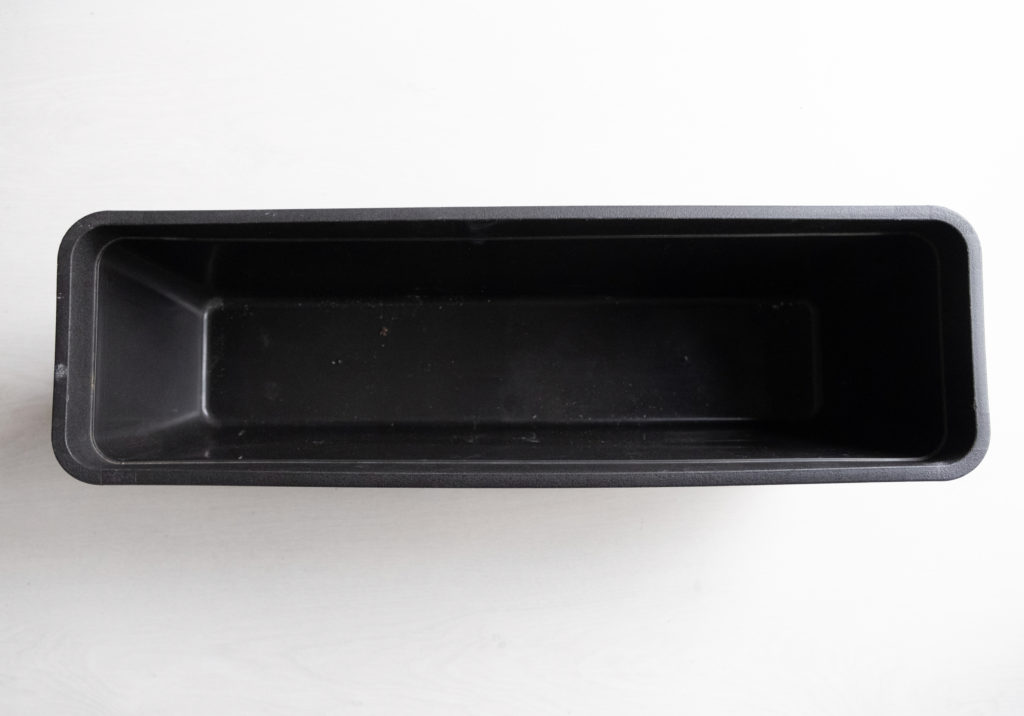
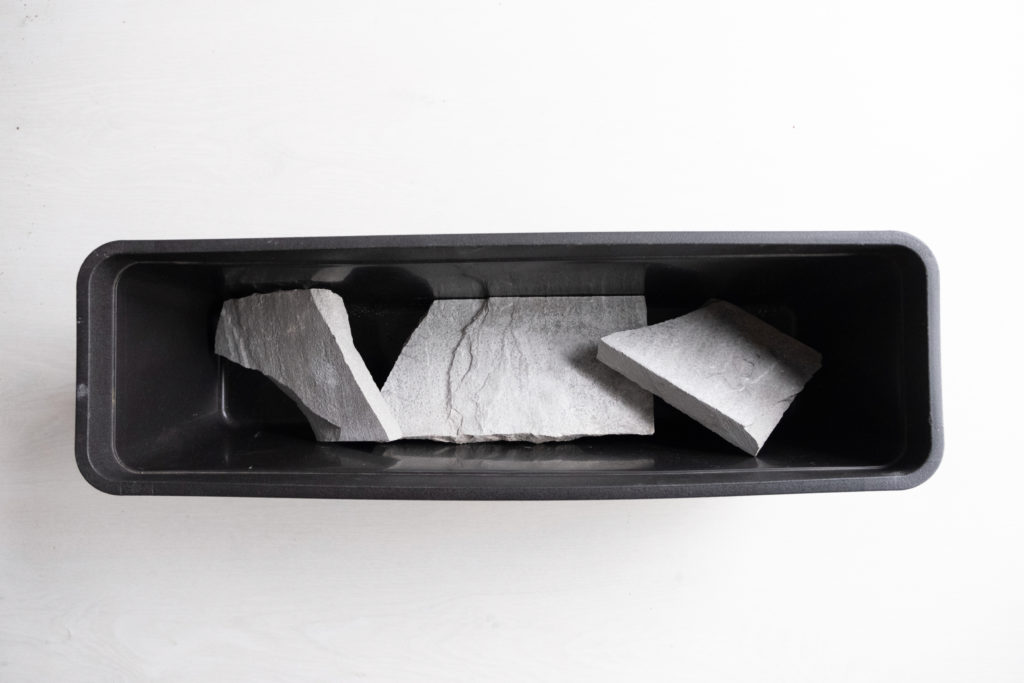
1. To begin, fill the window box with a selection of heavy stone or bricks to provide some weight and stability to the mechanic. Do wash any stone or bricks prior to use to ensure the water is kept fresh for your plant material.
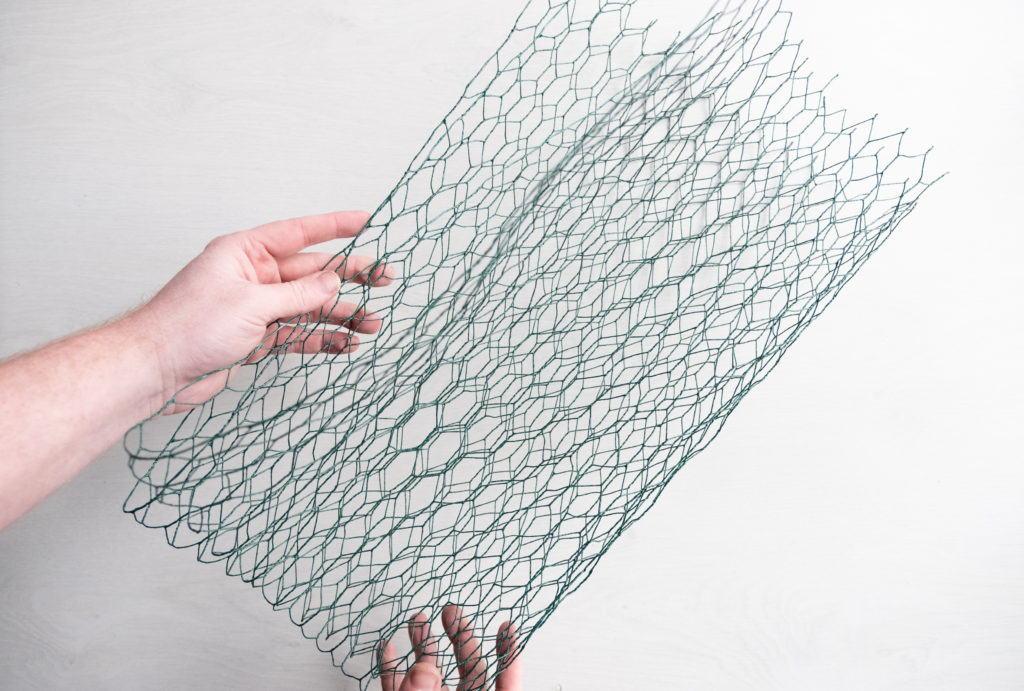
2. Take a sheet of plastic coated chicken wire, approximately 100cm x 70cm. Fold the chicken wire sheet in half, and then half again, creating a rectangle of chicken wire.
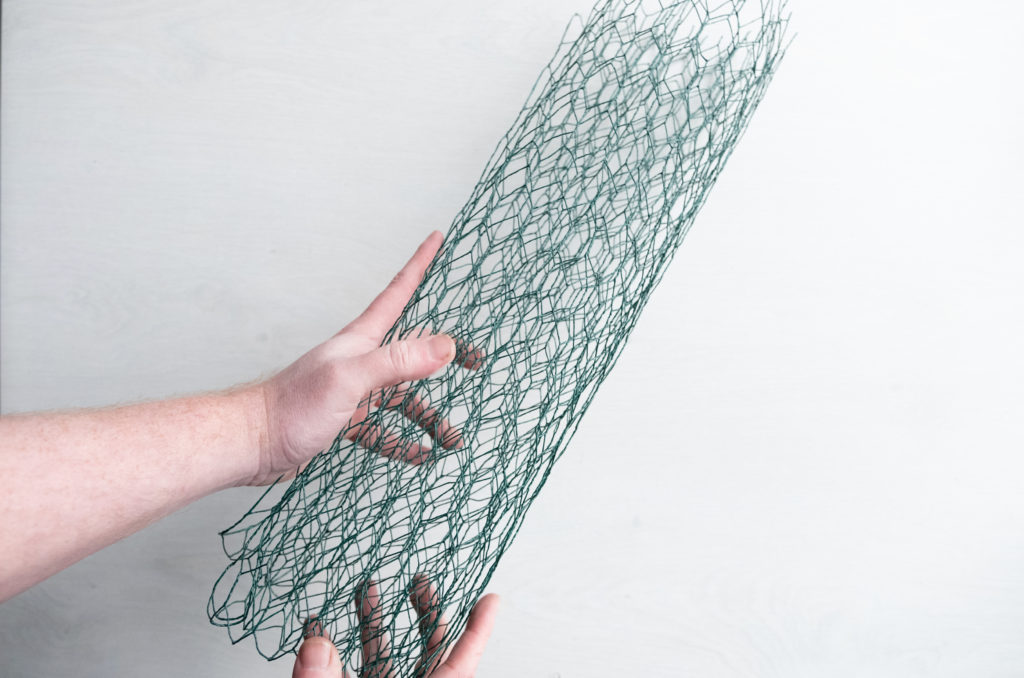
3. Starting from the left hand side, roll the chicken wire into itself, creating a cylinder of chicken wire, approximately as thick as the width of the window box.
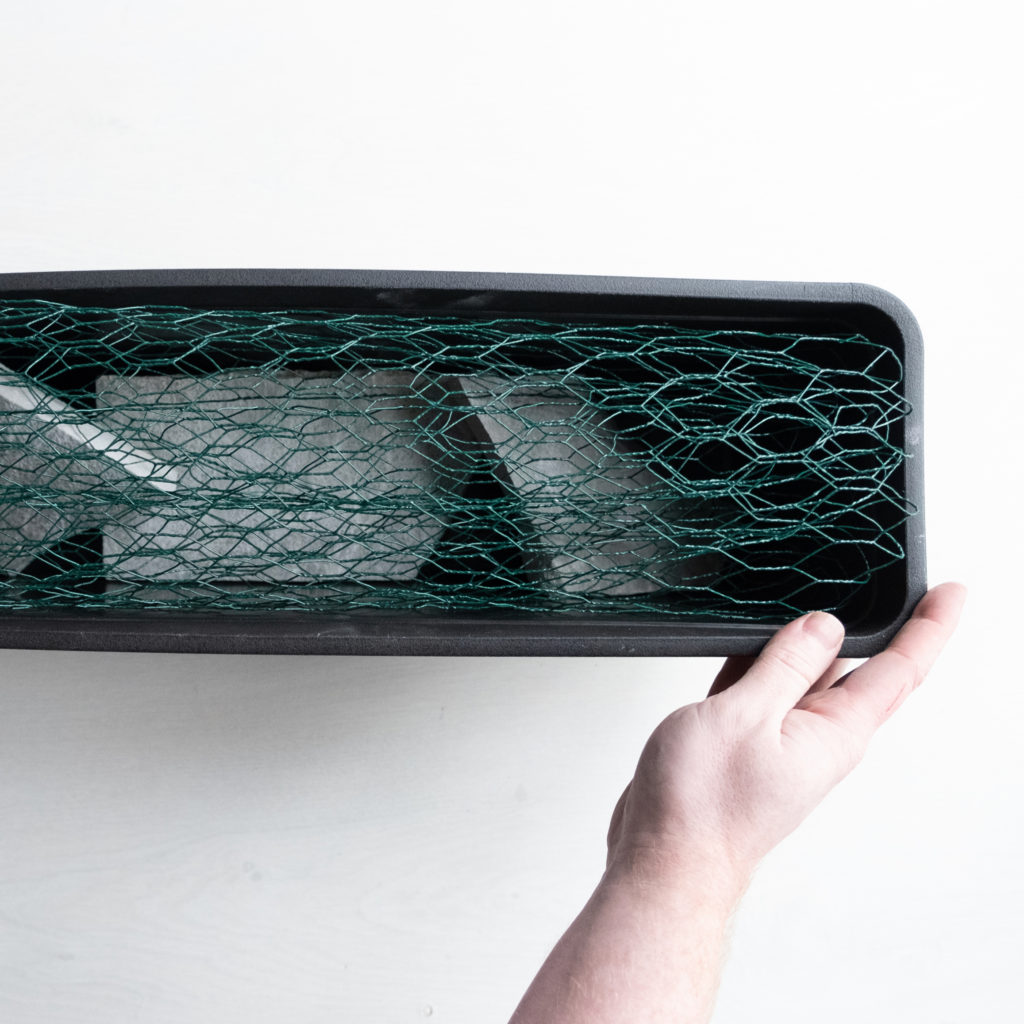
4. Place the chicken wire snugly within the window box, applying a little pressure to ensure a snug fit within the window box.
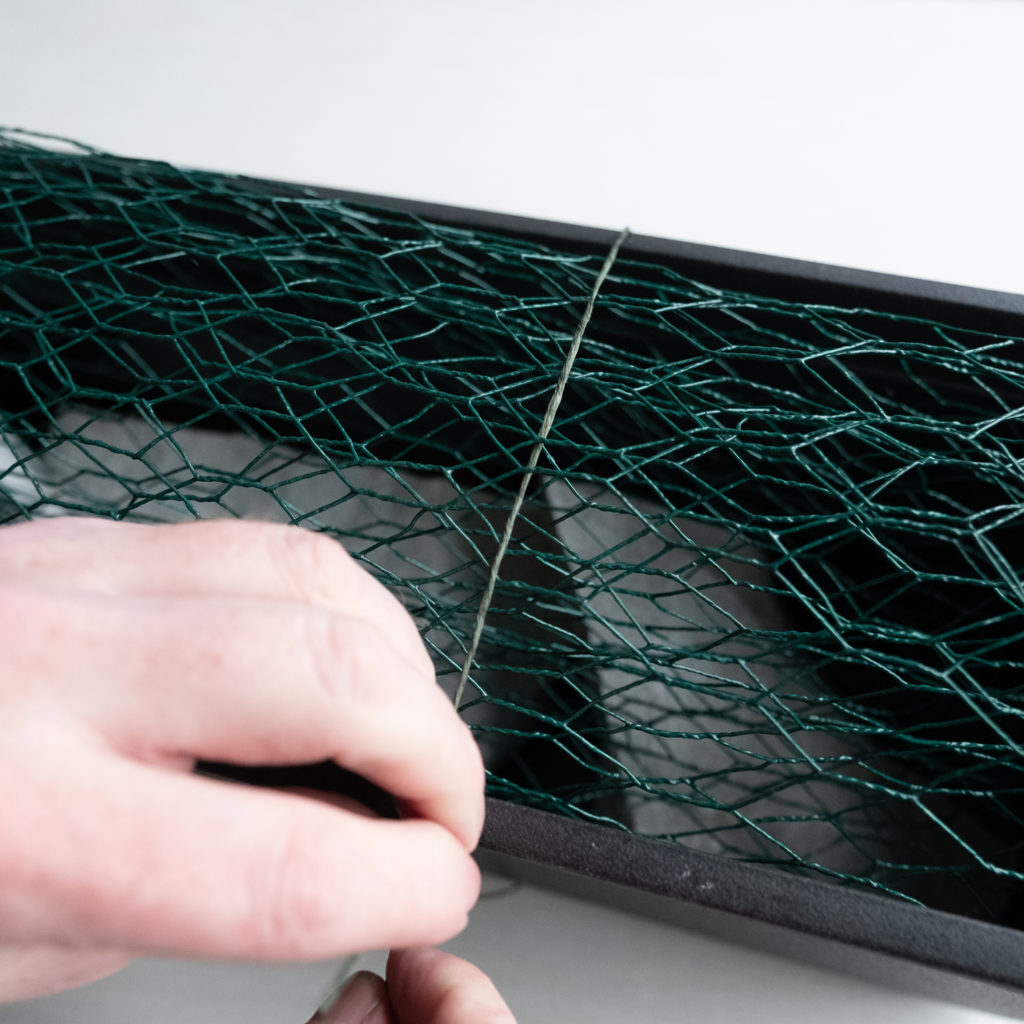
5. To secure the chicken wire roll in position, take a length of paper covered wire, approximately 75cm long. Place this wire underneath the window box so as to arrange an equal amount of wire showing on either side of the box and wrap it around the window box on both sides. Next bring the wire to the top of the window box, and thread it through the gaps in the chicken wire, securing the chickenwire in place.
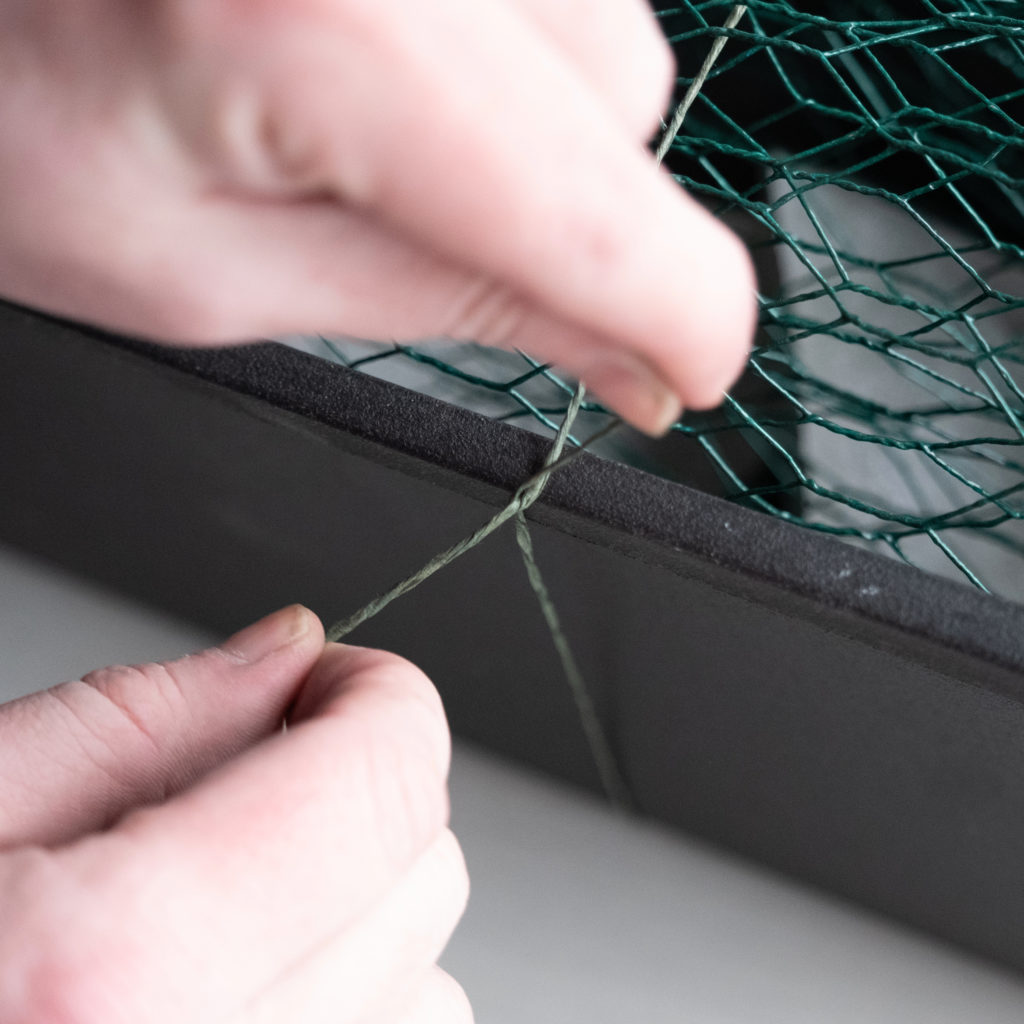
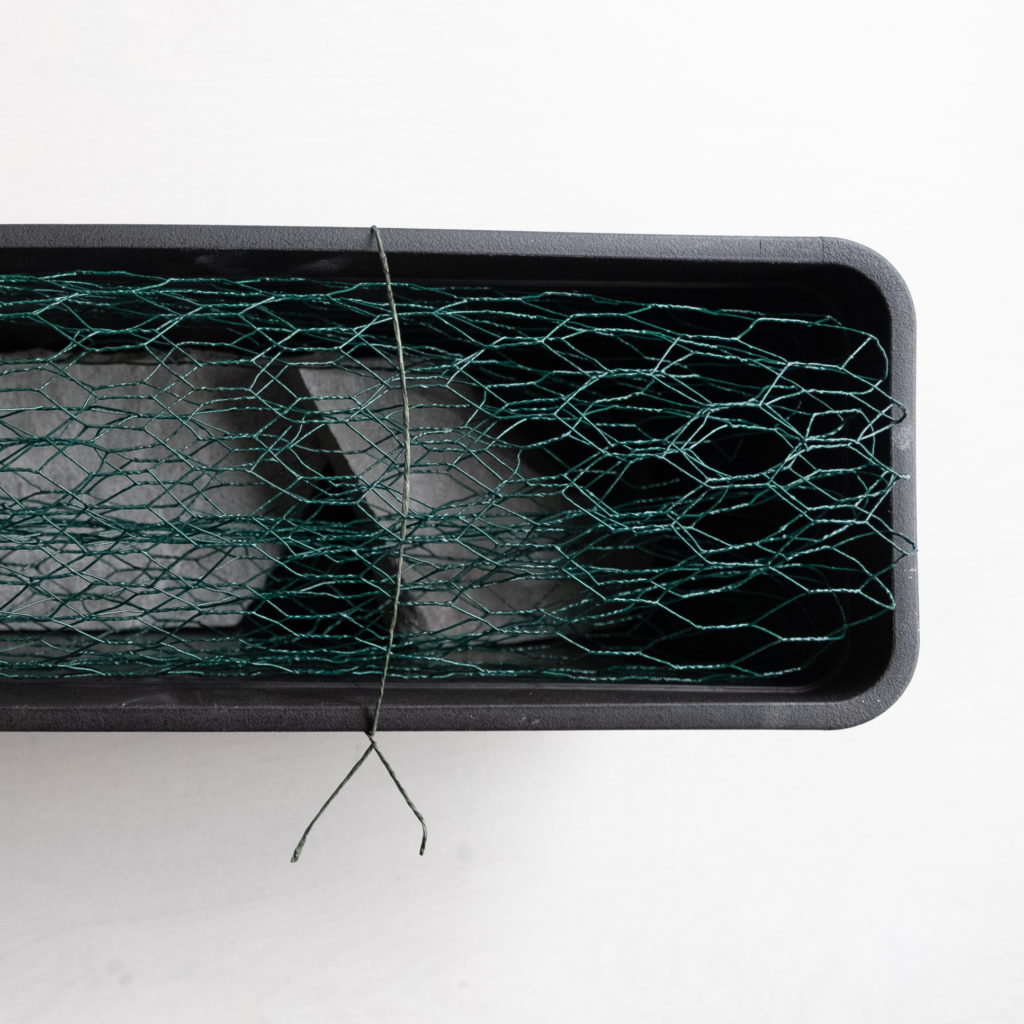
6. Twist the two ends of the paper covered wire together several times, creating a tight, neat twist and securing the wire and chicken wire in place. Trim off the excess wire that is left following the twist. Repeat this process twice more at regular intervals along the window box, for additional security. At this point, you may fill the window box one third full of water and begin designing.
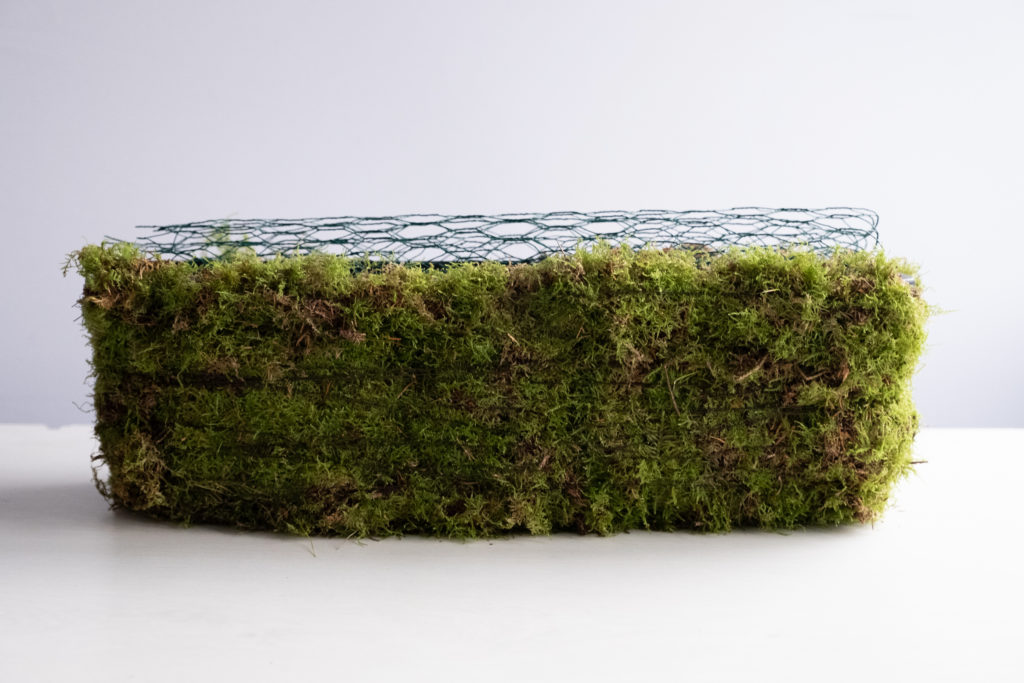
7. Once created, your window box will be able to be positioned in a variety of situations, and will be able to be re-used time and time again. To further the ease of use, you may wish to cover the window box with moss or leaves prior to incorporating within your design – this will help to disguise the window box, meaning that less materials will be required to disguise this mechanic. Finally, I usually do not fill my window boxes fully with water in my studio, as once filled they can be very heavy, and because of their shape, can spill water very easily. Instead I’ll fill the window boxes only one third full of water for designing, and then top them up with water on site as needed.
By offering detailed, thoughtful and enriching tutorials each and every month within Flower Class, it’s our hope that you’ll have a clear and exciting path to growth – to grow your skills and your knowledge, but also to grow the business of your dreams too. Let’s dive into what ongoing floral design support you’ll receive by joining our membership.
WHAT ARE THE BENEFITS OF FLOWER CLASS?
In Flower Class, every month you’ll receive four key offerings :
1 – A comprehensive floral design video tutorial, featuring a commercial, sustainably minded floral design, and showing you how to create that design, from the very materials you’ll need, right through to delivery.
2 – A live webinar with Joseph, dissecting a theory or business topic – which could be anything from how to use Instagram effectively, to a discussion on colour theory, or how to build an epic wedding or event proposal.
3 – Access to exclusive How I Made It articles, published in full exclusively for Members.
4 – A monthly support Zoom call to ask questions, discuss the month’s current topic, debate your ideas – essential for your continuous professional development.
With these four offerings, you’ll hear from us on a weekly basis – providing support, encouragement, and community as you dive into the tutorials that are of interest to you.
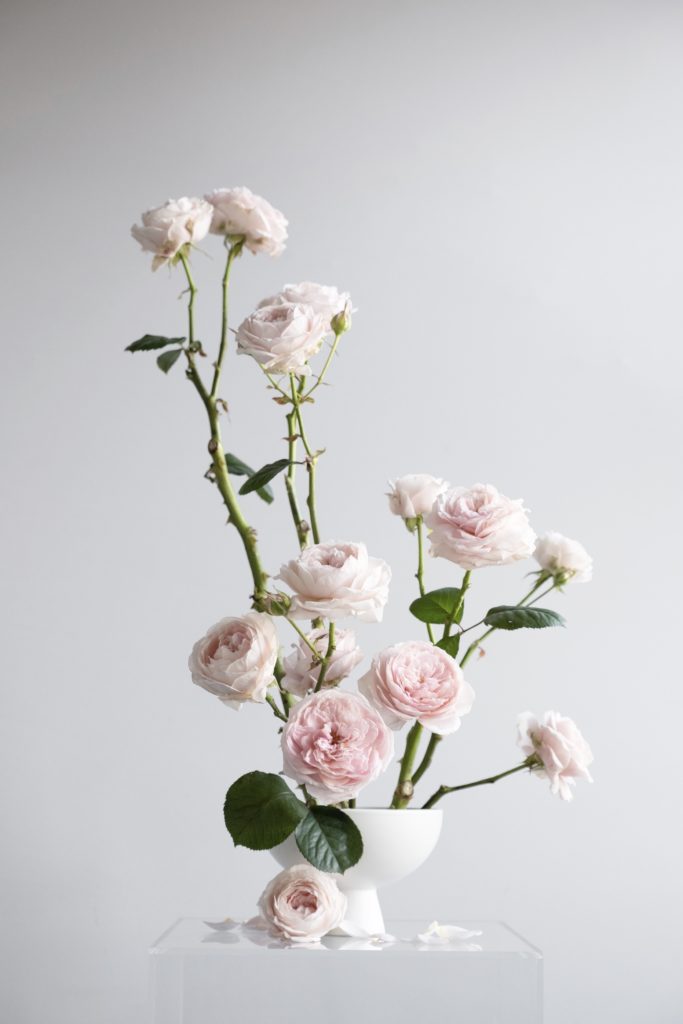
Alongside the four key offerings, members also receive :
5 – Ongoing professional development support from our team through our forum, The Flower Class Community, where you’ll be able to ask questions, network, and share hints, tips and advice.
6 – Access to exclusive discounts and advance access to ALL sales on EVERY new launch, product or event that we have to share. Our members come first, and as such it’s only right that they get the very best deals.
7 – Access to The Flower Class Conversations – recordings of Joseph’s interviews with industry leaders, including renowned designers, wholesalers, influencers and business owners, not available anywhere else, exclusively for members.
8 – The opportunity to book a 1:1 Zoom consultation with Joseph to discuss any design, business or theory topic of your choice – a feature we offer exclusively to the members of Flower Class
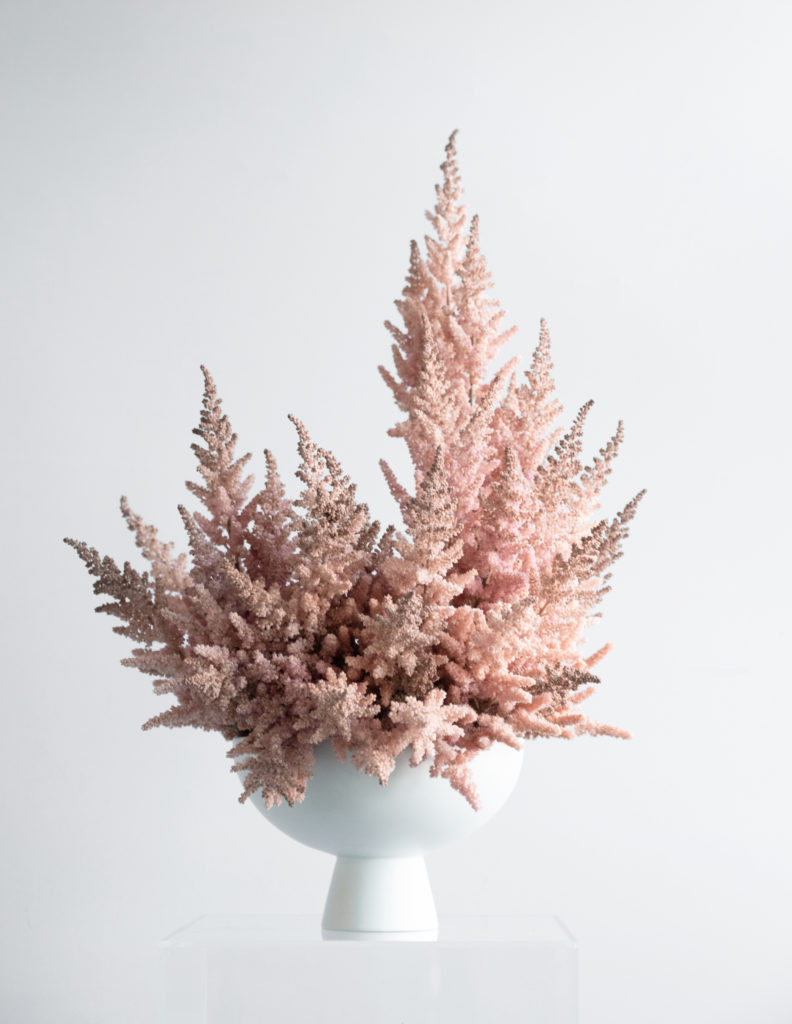
SO WHO IS FLOWER CLASS FOR?
We’ve built Flower Class to provide comprehensive value to our members, but we know that some people might not be sure if Flower Class is right for them. We think that Flower Class is the perfect membership for:
- Budding floral designers who are building their skills, and building their practice
- Experienced floral designers who want to learn a new perspective, or refresh their skills
- Floral designers who feel they never really “got” floral theory – principles and elements, proportions, placements etc. and want to understand how to enrich their work through this understanding.
- Creative thinkers who want to explore a brand new medium
- Floral business owners who are interested in commercial, practical ideas for their business
- Floral creatives who are interested in learning sustainable practices and techniques
- Creatives who are looking for a global, supportive community in which to belong
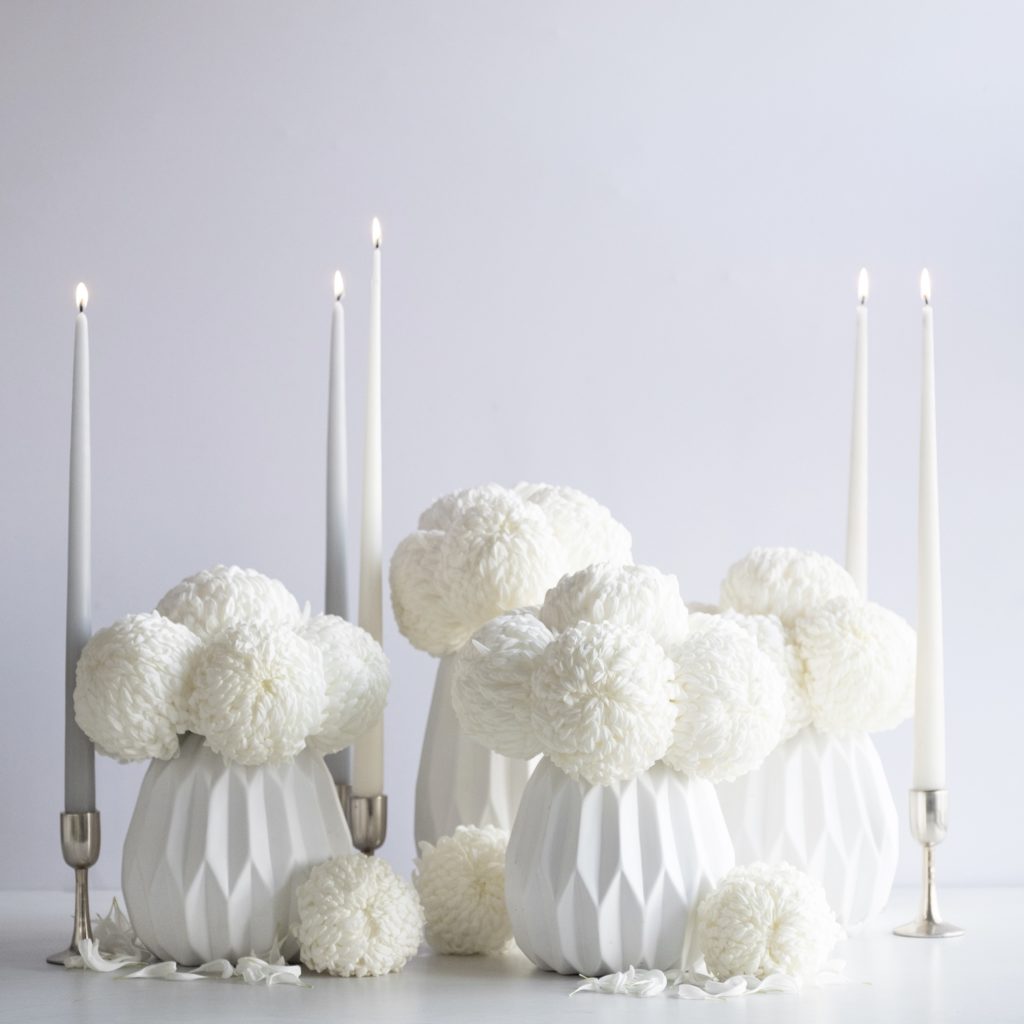
If you want to find out more about Flower Class, or discover our Free Floral Resources, be sure to check the links below:
Discover more on Flower Class : CLICK HERE
Discover our free floral resources on the Joseph Massie blog : CLICK HERE
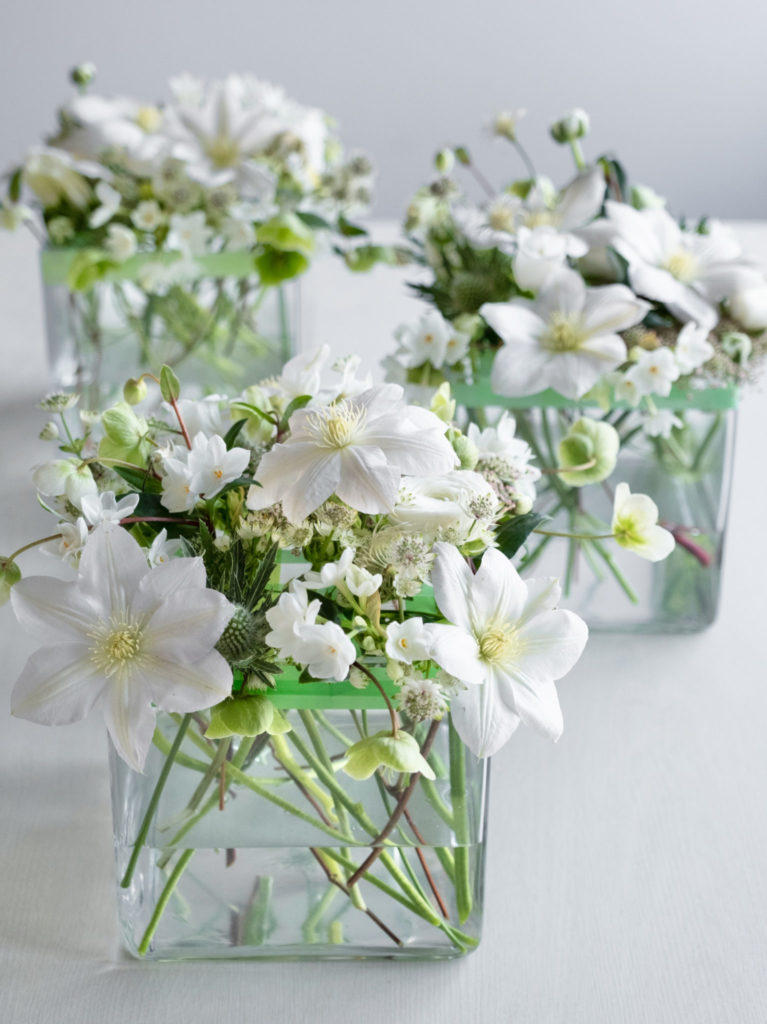
We Think You Might Also Enjoy:
How I Made It: Washi Tape Vases by Joesph Massie: Click here.
Photography: Stella Photography
Leave a Reply
Share your Thoughts:
Subscribe and stay connected
This site may contain copyrighted material the use of which has not always been specifically authorized by the copyright owner. It is being made available in an effort to provide educational information about all things related to floral design and production. It is believed that this constitutes a 'fair use' of any such copyrighted material as provided for in section 107 of the US Copyright Law. In accordance with Title 17 U.S.C. Section 107, the material on this site is available for viewing without profit to those who have an interest in reading or viewing the website information for educational purposes. If you wish to use copyrighted material from this site for purposes of your own that go beyond 'fair use', you must obtain permission from the copyright owner. If your copyrighted material appears on this web site and you disagree with our assessment that it constitutes "fair use," please contact us and we will remove it from our site.

Comments: